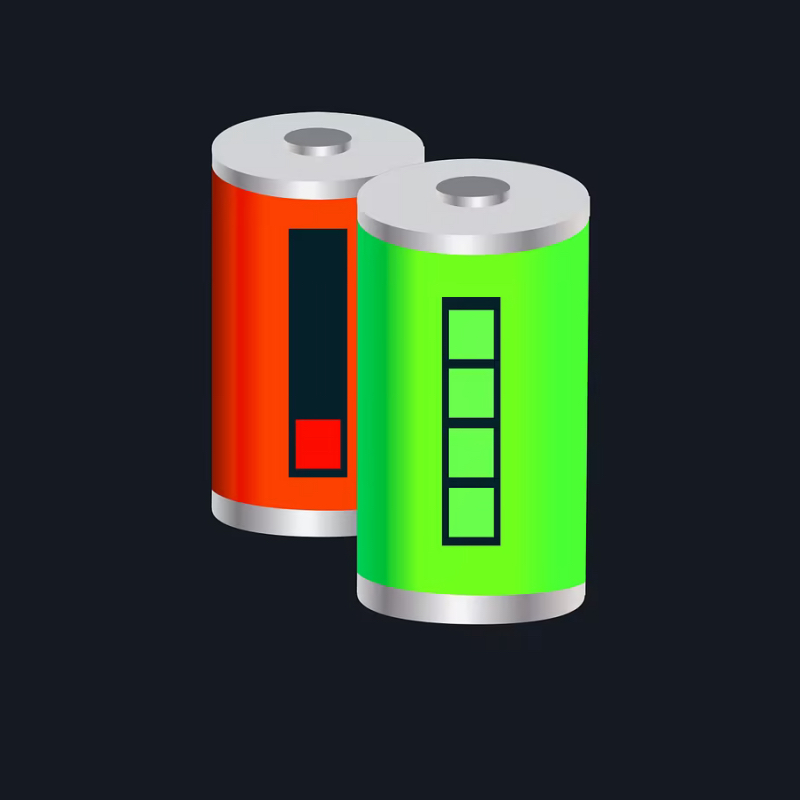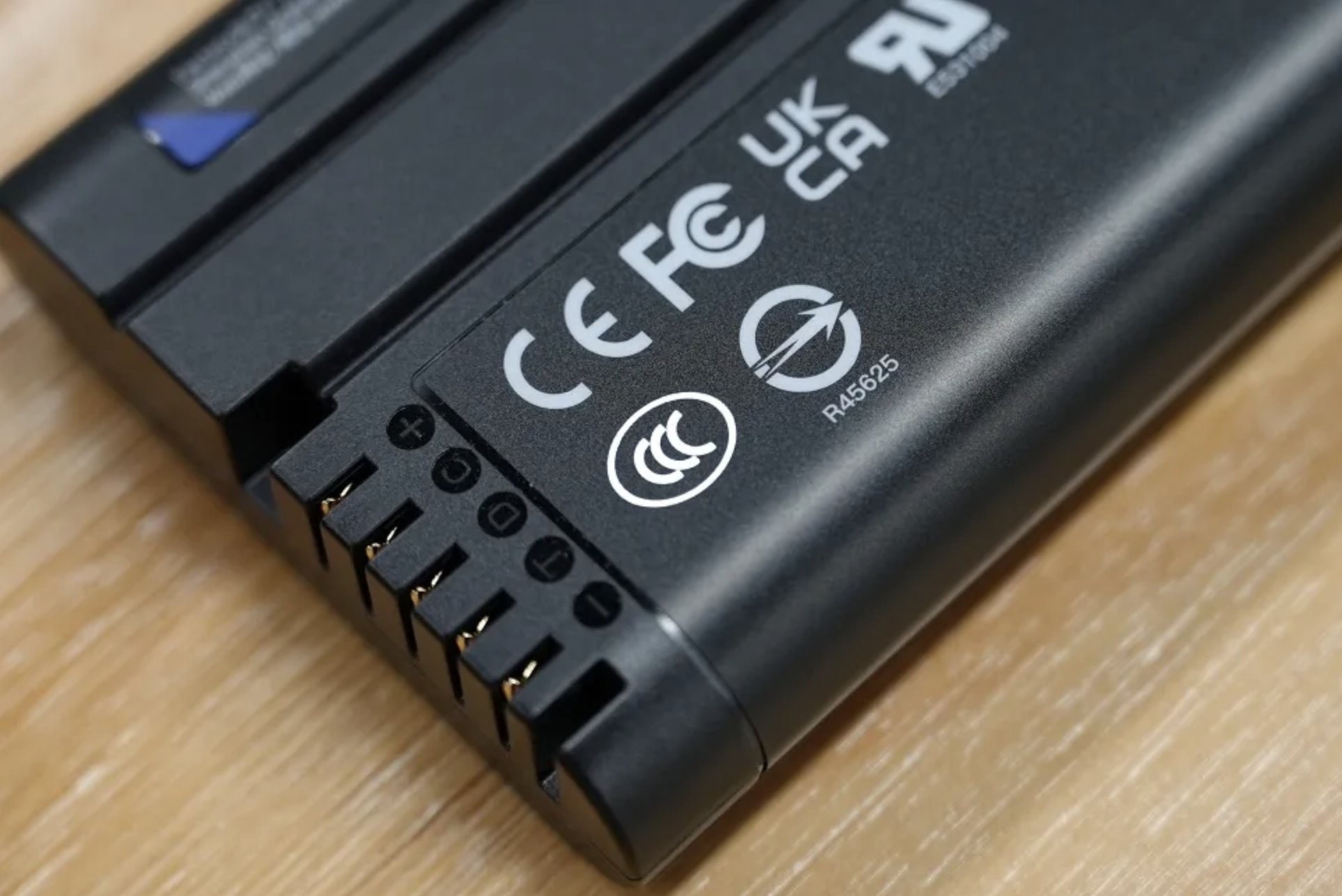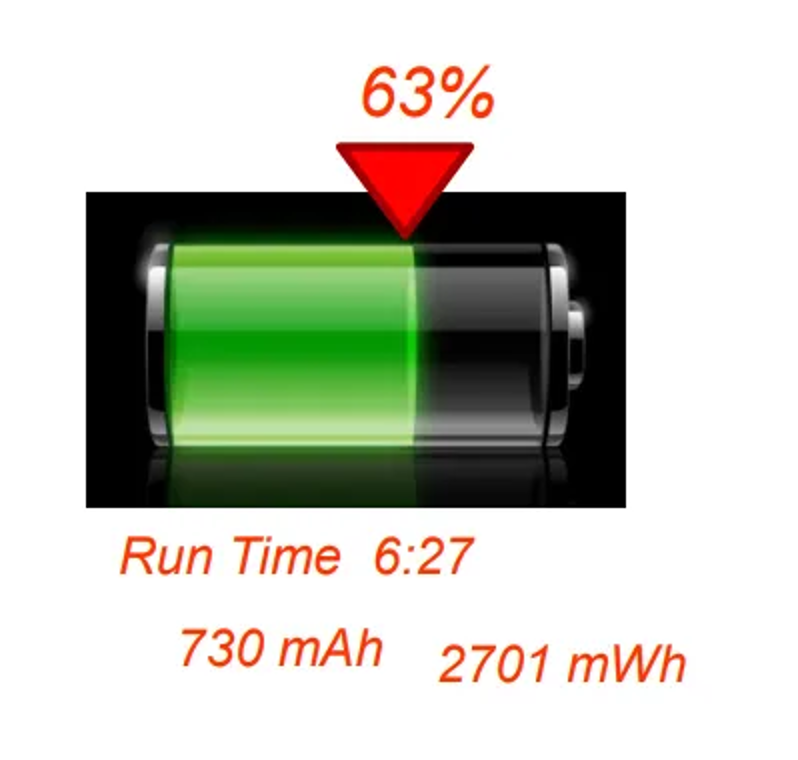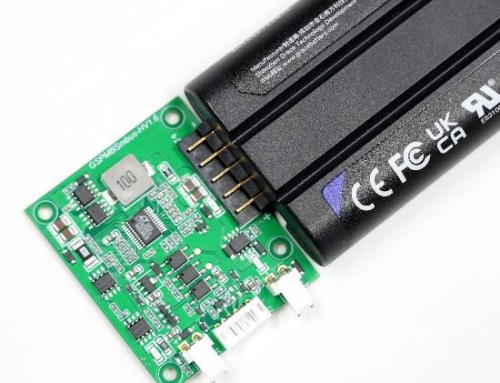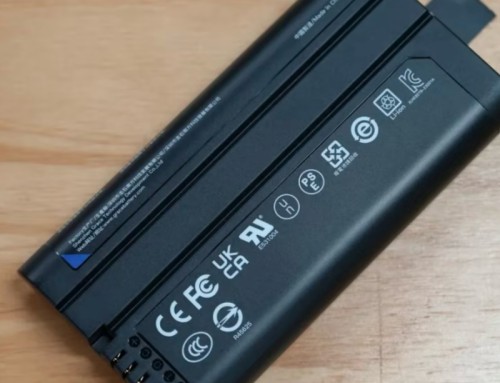The Ultimate Guide to Choosing the Perfect Rechargeable Battery
Why choose rechargeable batteries?
In today’s world, where electronic devices have become an integral part of our daily lives, the need for reliable and efficient power sources has never been more crucial. Rechargeable batteries have emerged as a game-changer, offering a sustainable and cost-effective solution for powering our gadgets. These versatile energy storage devices not only reduce waste but also provide convenience and long-term savings.
Unlike disposable batteries, which are designed for single-use and contribute to environmental pollution, rechargeable batteries can be recharged and reused multiple times. This eco-friendly approach aligns with the growing demand for sustainable practices and minimizes the environmental impact of battery waste.
Moreover, rechargeable batteries offer significant cost savings in the long run. While the initial investment may be higher than disposable batteries, their reusable nature ensures a longer lifespan, ultimately making them a more economical choice over time.
Different types of rechargeable batteries
The world of rechargeable batteries is diverse, with various types available to cater to different needs. Here are some of the most common types:
- Nickel-Metal Hydride (NiMH): Known for their high energy density and low self-discharge rate, NiMH batteries are commonly used in digital cameras, cordless phones, and power tools.
- Lithium-Ion (Li-ion): Lightweight, high-performance, and with a long lifespan, Li-ion batteries are widely used in laptops, smartphones, and electric vehicles.
- Nickel-Cadmium (NiCd): Although less common due to environmental concerns, NiCd batteries are known for their durability and ability to withstand extreme temperatures.
- Lead-Acid: These batteries are commonly found in automotive applications, such as car batteries and uninterruptible power supplies (UPS).
Each type of rechargeable battery has its unique characteristics, strengths, and weaknesses, making it essential to choose the right one based on your specific needs.
Advantages of rechargeable batteries
Rechargeable batteries offer numerous advantages over their disposable counterparts, making them an attractive choice for various applications. Here are some of the key benefits:
- Environmental Friendliness: By reducing the amount of waste generated from disposable batteries, rechargeable batteries contribute to a more sustainable future.
- Cost-Effectiveness: Although the initial investment may be higher, rechargeable batteries can be used repeatedly, resulting in substantial long-term cost savings.
- Convenience: With the ability to recharge and reuse, rechargeable batteries eliminate the need for frequent replacements, providing a hassle-free experience.
- Energy Efficiency: Many rechargeable battery types, such as lithium-ion, offer higher energy density and longer runtimes compared to disposable batteries.
- Versatility: Rechargeable batteries are available in various sizes and capacities, making them suitable for a wide range of applications, from small electronics to power tools and even electric vehicles.
Understanding rechargeable battery pack specifications
When selecting a rechargeable battery pack, it’s essential to understand the various specifications and terminology associated with them. Here are some key terms to be familiar with:
- Capacity: Measured in milliampere-hours (mAh) or ampere-hours (Ah), capacity represents the amount of energy a battery can store and deliver over time.
- Voltage: Typically expressed in volts (V), voltage indicates the potential difference between the positive and negative terminals of a battery.
- Cycle Life: This refers to the number of charge-discharge cycles a battery can undergo before its capacity drops below a specified threshold, usually 80% of its initial capacity.
- Self-Discharge Rate: The rate at which a battery loses its charge when not in use, typically expressed as a percentage per month or year.
- C-Rate: The C-rate represents the rate at which a battery can be charged or discharged relative to its capacity. For example, a 1C rate for a 2000mAh battery means a charge or discharge current of 2000mA (2A).
Understanding these specifications is crucial for selecting the right rechargeable battery pack that meets your power requirements and usage patterns.
Choosing the right rechargeable lithium-ion battery
Among the various types of rechargeable batteries, lithium-ion (Li-ion) batteries have gained widespread popularity due to their high energy density, lightweight design, and long lifespan. However, selecting the right Li-ion battery can be a daunting task with the numerous options available on the market. Here are some key factors to consider:
- Capacity: Determine the capacity required based on your device’s power consumption and desired runtime. Higher capacity batteries generally provide longer runtimes but may be larger and heavier.
- Voltage: Ensure that the battery’s voltage matches the requirements of your device. Most consumer electronics use 3.7V or 7.4V Li-ion batteries.
- Discharge Rate: If your application requires high current draw, such as power tools or RC vehicles, choose a battery with a higher discharge rate (C-rate) to prevent premature voltage drops.
- Cycle Life: For devices with frequent charge-discharge cycles, opt for batteries with a higher cycle life rating to ensure longer usability.
- Safety Features: Look for Li-ion batteries with built-in safety features like overcharge, overdischarge, and short-circuit protection to prevent potential hazards.
- Brand Reputation: Choose reputable brands known for their quality and safety standards to ensure reliable performance and longevity.
By considering these factors, you can select a rechargeable Li-ion battery that meets your specific needs, ensuring optimal performance and a satisfactory user experience.
Factors to consider when selecting a rechargeable battery
Choosing the right rechargeable battery involves considering various factors beyond just the type and specifications. Here are some additional considerations to keep in mind:
- Application: Different applications have varying power requirements and usage patterns. For example, a battery for a digital camera may prioritize high capacity, while a power tool battery may require high discharge rates.
- Size and Weight: Portable devices often have size and weight constraints, making compact and lightweight batteries more desirable.
- Operating Temperature Range: Certain battery types perform better in extreme temperatures, making them suitable for outdoor or industrial applications.
- Self-Discharge Rate: Batteries with a lower self-discharge rate are preferred for devices that may be stored for extended periods without use.
- Memory Effect: Some battery types, like NiCd, can suffer from the “memory effect,” where the battery appears to “remember” the previous charge level and fails to charge fully. Lithium-ion and NiMH batteries are less susceptible to this issue.
- Charging Time: Rapid charging capabilities can be beneficial for devices that require frequent recharging, while slower charging may be preferable for batteries with a longer lifespan.
- Cost: While rechargeable batteries offer long-term savings, the initial cost can vary significantly based on the type, capacity, and brand.
By considering these factors alongside the specific requirements of your application, you can make an informed decision and select the most suitable rechargeable battery for your needs.
Tips for maintaining and maximizing the lifespan of rechargeable batteries
To ensure optimal performance and longevity of your rechargeable batteries, it’s essential to follow proper maintenance and usage practices. Here are some tips to help you maximize the lifespan of your rechargeable batteries:
- Proper Charging: Follow the manufacturer’s recommendations for charging your batteries. Overcharging or undercharging can reduce battery life and potentially cause safety issues.
- Avoid Extreme Temperatures: High temperatures can accelerate battery degradation, while low temperatures can decrease battery performance. Store and use batteries within the recommended temperature range.
- Partial Discharging: For lithium-ion batteries, it’s better to partially discharge them rather than fully discharging them before recharging. This practice can help extend the battery’s cycle life.
- Storage Conditions: If you plan to store rechargeable batteries for an extended period, it’s best to partially charge them (around 40-50% capacity) and store them in a cool, dry place.
- Avoid Overcharging: Once a battery is fully charged, disconnect it from the charger to prevent overcharging, which can damage the battery and shorten its lifespan.
- Calibration: For certain battery types, like NiMH, periodic calibration (fully discharging and then fully recharging) can help maintain accurate charge level readings.
- Proper Disposal: When a rechargeable battery reaches the end of its usable life, dispose of it properly according to local regulations to prevent environmental harm.
By following these tips, you can ensure that your rechargeable batteries provide reliable performance and last for as long as possible, ultimately reducing your environmental impact and saving you money in the long run.
Comparing rechargeable batteries to disposable batteries
While rechargeable batteries offer numerous advantages, it’s essential to understand how they compare to disposable batteries in various aspects. Here’s a comprehensive comparison:
|
Aspect |
Rechargeable Batteries |
Disposable Batteries |
|---|---|---|
|
Environmental Impact |
Lower environmental impact due to reduced waste |
Higher environmental impact due to frequent disposal |
|
Cost |
Higher initial cost, but lower overall cost in the long run |
Lower initial cost, but higher overall cost due to frequent replacements |
|
Convenience |
Can be recharged and reused, eliminating frequent replacements |
Need to be replaced frequently, less convenient |
|
Energy Density |
Generally higher energy density, providing longer runtimes |
Lower energy density, shorter runtimes |
|
Shelf Life |
Shorter shelf life, as they can self-discharge over time |
Longer shelf life, can be stored for extended periods |
|
Charging Time |
Require time for recharging |
Ready to use immediately after purchase |
|
Safety |
Potential safety concerns if not handled properly (e.g., overcharging, short circuits) |
Generally safer, but can leak or rupture if mishandled |
|
Cycle Life |
Limited number of charge-discharge cycles before capacity degradation |
Single-use, no cycle life |
|
Memory Effect |
Some types (e.g., NiCd) can suffer from memory effect, reducing capacity |
No memory effect |
While rechargeable batteries offer significant advantages in terms of cost-effectiveness, energy density, and environmental impact, disposable batteries may be more suitable for applications that require immediate use or have infrequent power demands. Ultimately, the choice between rechargeable and disposable batteries depends on your specific needs, usage patterns, and priorities.
Common misconceptions about rechargeable batteries
Despite their widespread adoption and numerous benefits, there are several misconceptions surrounding rechargeable batteries that can lead to misunderstandings and improper use. Let’s address some of these common misconceptions:
- Rechargeable batteries have a short lifespan: This is a common misconception. While rechargeable batteries do have a limited number of charge-discharge cycles, they can last for several years with proper maintenance and usage practices.
- Rechargeable batteries need to be fully discharged before recharging: This is a myth that applies only to certain battery types like NiCd. For lithium-ion and NiMH batteries, it’s recommended to partially discharge them before recharging to extend their lifespan.
- Rechargeable batteries are not as powerful as disposable batteries: Modern rechargeable batteries, especially lithium-ion, often have higher energy densities and longer runtimes compared to disposable batteries of the same size.
- Rechargeable batteries are not suitable for high-drain devices: While it’s true that some rechargeable batteries may not perform well under high-drain conditions, there are specific types (like Li-ion with high C-rates) designed for high-drain applications such as power tools and RC vehicles.
- Rechargeable batteries have a memory effect: This is a common misconception, particularly for lithium-ion and NiMH batteries. These modern rechargeable batteries do not suffer from the memory effect, which was an issue with older NiCd batteries.
- Rechargeable batteries are not cost-effective: While the initial cost of rechargeable batteries may be higher, their ability to be recharged and reused multiple times makes them more cost-effective in the long run compared to frequently replacing disposable batteries.
By understanding and addressing these misconceptions, users can make informed decisions and properly utilize rechargeable batteries, maximizing their benefits and ensuring safe and efficient operation.
Rechargeable battery safety precautions
While rechargeable batteries offer numerous advantages, it’s crucial to handle them with care and follow proper safety precautions to prevent potential hazards. Here are some essential safety tips:
- Use Approved Chargers: Always use chargers specifically designed for the type and model of rechargeable battery you’re using. Incompatible or low-quality chargers can cause overcharging, overheating, or even battery explosions.
- Avoid Extreme Temperatures: High temperatures can damage rechargeable batteries and increase the risk of fires or explosions. Similarly, extremely low temperatures can impair battery performance and potentially cause permanent damage.
- Inspect for Damage: Before using or charging a rechargeable battery, inspect it for any signs of damage, such as dents, cracks, or leaks. Damaged batteries should be safely disposed of and replaced.
- Proper Storage: When storing rechargeable batteries, keep them in a cool, dry place away from direct sunlight and heat sources. Avoid storing them in locations where they may be subjected to excessive heat or moisture.
- Handling Precautions: Never disassemble, puncture, or crush rechargeable batteries, as this can lead to short circuits, fires, or explosions. Additionally, avoid exposing them to water or other liquids.
- Disposal: When a rechargeable battery reaches the end of its usable life, dispose of it properly according to local regulations. Many municipalities and retailers offer battery recycling programs to ensure safe and environmentally responsible disposal.
- Follow Manufacturer Guidelines: Always refer to the manufacturer’s instructions and guidelines for proper usage, charging, and storage of rechargeable batteries. These guidelines are designed to ensure safe and optimal performance.
By adhering to these safety precautions, you can minimize the risks associated with rechargeable batteries and enjoy their benefits without compromising your safety or the longevity of the batteries.
Recommended rechargeable batteries for TEFOO ENERGY
At TEFOO ENERGY, we understand the importance of reliable and high-performance rechargeable batteries for various applications. Here are some of our recommended rechargeable battery options:
- TEFOO ENERGY 18650 Lithium-Ion Batteries: Our 18650 Li-ion batteries offer high capacity (3000mAh or higher), long cycle life (up to 500 cycles), and built-in protection circuits for safety. These versatile batteries are suitable for flashlights, power banks, and other portable devices.
- TEFOO ENERGY Lithium-Ion Battery Packs: We offer customizable Li-ion battery packs in various configurations (voltage, capacity, and form factors) to meet the specific needs of your devices or projects. Our battery packs are designed with safety features and undergo rigorous testing for reliability.
All TEFOO ENERGY rechargeable batteries and battery products are manufactured with strict quality control measures and adhere to industry safety standards. We prioritize customer satisfaction and offer excellent customer support to ensure you have the best experience with our products.
Discover the power of reliable and long-lasting rechargeable batteries from TEFOO ENERGY. Visit our website at www.tefooenergy.com to explore our wide range of rechargeable battery solutions and find the perfect fit for your needs. Enjoy the convenience, cost-savings, and environmental benefits of our high-quality products. Don’t settle for disposable batteries – make the switch to rechargeable power today!
Conclusion
Choosing the right rechargeable battery is a crucial decision that can significantly impact the performance, reliability, and lifespan of your devices. By understanding the different types of rechargeable batteries, their specifications, and the factors to consider, you can make an informed choice that aligns with your specific needs and applications.
Rechargeable batteries offer numerous advantages over disposable batteries, including cost-effectiveness, environmental friendliness, and convenience. However, it’s essential to follow proper maintenance practices and safety precautions to ensure optimal performance and longevity.
At TEFOO ENERGY, we are committed to providing high-quality rechargeable battery solutions that meet the diverse needs of our customers. Our extensive range of rechargeable batteries, battery packs, and power stations are designed to deliver reliable and efficient power, while prioritizing safety and sustainability.
By embracing rechargeable battery technology, you not only contribute to a greener future but also enjoy the convenience and cost savings that come with reusable power sources. Invest in the right rechargeable batteries today and experience the difference in performance, longevity, and environmental responsibility.
Remember, the journey towards a more sustainable and energy-efficient lifestyle begins with the choices we make. Make the switch to rechargeable batteries and embark on a path that not only powers your devices but also supports a cleaner and greener tomorrow.

